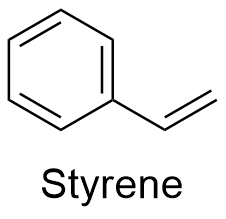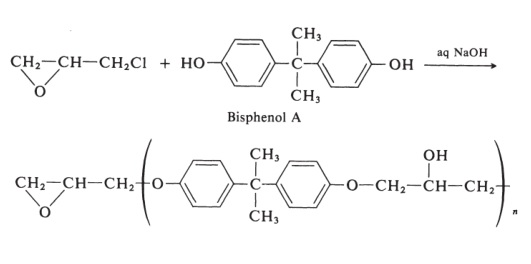Natural resins are typically fusible and flammable organic substances that are transparent or translucent and are yellowish to brown in colour. Epoxy resin is used as the matrix phase in carbon-fibre composites for aircraft structures and as an adhesive in aircraft structural joints and repairs.
Epoxy resin is a chemical compound containing two or more epoxide groups per monomer.

Chemical formula of resin. There are many types of epoxy resins and the chemical structure of an epoxy resin often used in aerospace composite materials is shown in Fig. Three fused rings having the empirical formula C19H29COOH. Chemical resin is a term used to describe synthetic resins.
Suspendisse faucibus risus sit amet auctor sodales justo erat tempor eros. The structure of the resin can be engineered to yield a number of different products with varying levels of performance. Natural resin is produced by most plants and is a thick sticky fluid.
110 Kg NaCl 150 Gram NaCl liter of resin. Laboratory Chemical Safety Summary LCSS Datasheet. The epoxide functional group is also collectively called epoxy.
Hence Liter of resin Feed Hardness in ppm X Water Qty M3 Exchange capacity 400 x 100 55 727 liter resin sufficient. Resin Chemical Formula Epoxy Resin For Casting Hot Sell Epoxy Resin Chemical Formula 2 Component Casting Epoxy Resin For Electronics US 240-300. Natural resins are typically fusible and flammable organic substances that are transparent or translucent and are yellowish to brown in colour.
Laboratory Chemical Safety Summary LCSS Datasheet. An important and widely used cycloaliphatic epoxy resin is the diglycidyl ester of hexahydrophthalic acid and 34-Epoxycyclohexylmethyl-34-epoxycyclohexane. Resin any natural or synthetic organic compound consisting of a noncrystalline or viscous liquid substance.
Resin any natural or synthetic organic compound consisting of a noncrystalline or viscous liquid substance. This tool calculates the overall density and price of a resin system polymer resin additives. Today polyester is prepared by reacting diethylene glycol HOCH 2 CH 2OH and an unsaturated aliphatic acid such as maleic acid HOOCCHCHCOOH.
What is hardener in epoxy. Epoxy resins may be reacted cross-linked either with themselves. Simply type in the amount in parts per hundred by weight the polymer resin is set to 100 the density in gcm 3 and price in kg or other currencykg of each component of the resin system eg.
Phenol polymer with formaldehyde. The IUPAC name for an epoxide group is an oxirane. What is Chemical Formula Services.
How to Calculate Salt Quantity. 13042020 Resin acid refers to mixtures of several related carboxylic acids primarily abietic acid found in tree resins. Epoxy resins have a well-established record in a wide range of composites parts structures and concrete repair.
Lorem ipsum dolor sit amet consectetur adipiscing elit. Resin acids are tacky yellowish gums that are water-insoluble. Developed from research conducted.
Lorenzo reacted ethylene glycol with succinic acid in 1863 to produce a second polyester. Formulations incorporating these resins can exhibit high glass transition temperatures in the range of 200C. The Resin Exchange Capacity is mention in the products supplier Data Sheet.
The name alkyd formed from alkyl a chemical abbreviation for alcohol and acid denotes the chemical origin of the resin which is commonly based on a polymerization reaction between an alcohol such as glycerol and a dicarboxylic acid or its anhydridefor instance phthalic anhydride. Epoxy is the family of basic components or cured end products of epoxy resinsEpoxy resins also known as polyepoxides are a class of reactive prepolymers and polymers which contain epoxide groups. These resins can be formulated and chemically tailored to provide properties and process compatibility.
Types of chemical resin include plastic resin acrylic resin polypropylene resin and melamine resin. Normally cationic exchange capacity. Nearly all resin acids have the same basic skeleton.
The similarity between chemical resin and natural resin is that they both harden. They are formed in plant secretions and are soluble in various organic liquids but not in water.

Pin By Joe Mullins On Zips4days In 2020 Chloroform Acetic Anhydride Distillation Apparatus









0 comments:
Post a Comment